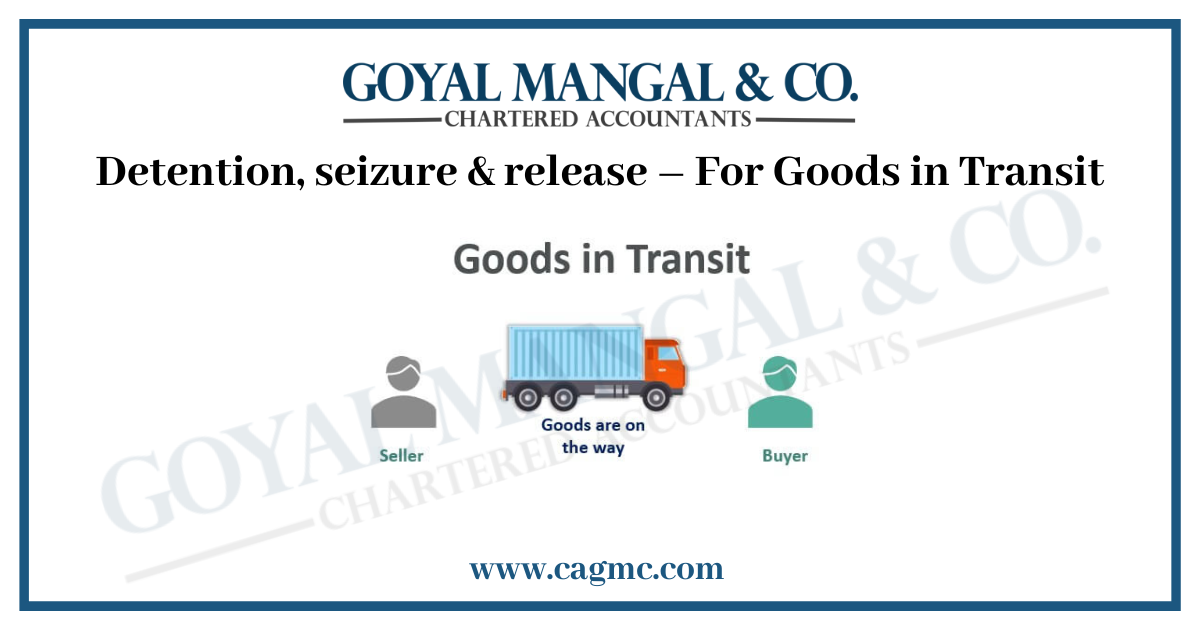
Welcome to our blog on the detention and seizure and release of goods under transit in the Goods and Services Tax (GST) system. In this blog, we aim to provide you with a concise understanding of these crucial aspects of GST transit. During the transportation of goods across state borders, it is essential to be familiar with the procedures and implications of detention and seizure of goods in transit. Our blog will shed light on the reasons for these actions, the relevant legal provisions, and the steps involved in the release of detained or seized goods.
| Table of Contents |
Meaning of Inspection of Goods under transit
Inspection of goods under transit as per GST refers to the process of verifying and examining goods being transported across state borders to ensure compliance with GST regulations. Tax authorities have the power to inspect goods in transit to confirm the accuracy of accompanying documents, check for proper invoicing, and verify the payment of applicable taxes and duties. So, the person in charge must carry all important document such as invoice and e-way bill. The objective of this inspection is to prevent tax evasion, ensure compliance, and maintain the integrity of the GST system.

Difference between Detention & Seizure of goods
Since these terms are frequently used in relation to GST, it’s critical to understand how they differ from one another. So, this is how detention and seizure of goods in transit differ from one another:
- Detention: When the owner of the items is prohibited from accessing the goods, this is referred to as detention. However, it should be remembered that the owner of the detained goods still retains ownership of them. The government issues the detention order when there is a reasonable suspicion that the goods are liable to be confiscated.
- Seizure: Unlike detention, in seizure, the actual possession of the goods is taken by the department. However, the goods can only be seized if they have undergone a thorough inspection and the department has determined that the goods should be confiscated.
Process of Detention and Seizure of goods in transit
- The tax officer must give a detention order to the person in charge of moving the consignment to detain and seize the consignments and the transportation vehicle.
- After detaining, a notice is issued by the tax officer containing the tax payable on the goods along with the penalty. However, the taxpayer is given an opportunity of being heard.
- The tax officer discharges all detention charges once the owner has paid the tax and penalty amount.
- If the owner does not pay the remaining tax due and the penalty assessed within 7 days of the day the order was given, the goods will be seized. Additionally, it should be noted that the timeline may change in the case of hazardous goods and perishable commodities.
Penalty on seized goods under GST
The consignment and the transporting vehicle may be seized by the authorized official if the person in charge is transporting the consignment without the necessary documentation or in violation of the GST Act. After paying the tax and penalty, both items can be released. The quantum of penalty is based on two scenarios, and they are:
- In case if the owner of the goods voluntarily comes forward: In these situations, the amount of the penalty is often equal to the amount of tax that must be paid.
- The owner is required to pay a penalty equal to 50% of the value of the goods before tax if the owner refuses to come forward willingly.
- It shall be noted that in the case of exempted goods the penalty amount decreases to 2% and 5% of the value of the goods respectively or 25,000 INR whichever is lower.
Release of Goods
The procedure of returning the goods to the owner or another authorized person occurs after the goods have been detained and seized. When it comes to GST, the products are normally released after detention and seizure when the necessary authorities, such as the tax department or customs officials, have finished their investigations or resolved any issues related to the goods.
When items are detained and seized, it indicates that the authorities have temporarily taken custody of them for a variety of reasons, such as suspicions of tax fraud, violation of rules, or participation in unlawful activities. The goods may be kept by the authorities pending additional inspection, an investigation, or legal action.
The authorities may return the goods back to the owner or authorized party following the conclusion of the inquiry or legal procedures and if it is determined that they follow all applicable rules and regulations. Any limits or legal burdens put on goods must be lifted as part of the release process for them to be given back to their original owner or used for the intended purpose.
Takeaway
Understanding the processes of detention, seizure, and release of goods under transit in the GST regime is essential for businesses involved in interstate transportation. By being familiar with the reasons behind detention and seizure and release – For goods in transit, as well as the relevant legal provisions, you can take proactive measures to prevent disruptions to your transit operations. Moreover, knowing the steps involved in the release of detained or seized goods allows you to expedite the resolution process. We hope that this blog has equipped you with valuable knowledge to protect your interests and optimize your business operations during GST transit







